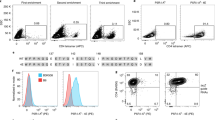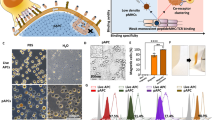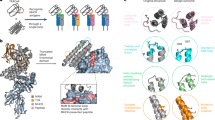Abstract
The response of T lymphocytes to antigens of the major histo-compatibility complex (MHC) in a species is commonly measured by two assays. The mixed lymphocyte reaction (MLR) measures proliferating lymphocytes (Tp), and cell-mediated cytolysis (CMC) measures the cytotoxic T cells (Tc) generated, which can destroy tissue cells bearing the alloantigens against which the response is directed1. Tp and Tc are thought to be derived from different precursors, the TP-P and TC-P respectively, and each seem to have different requirements for activation. Initially it was claimed that TP-P and TC-P were coded to respond to antigens specified by different genes in the MHC2 but this distinction has since been shown not to be absolute3–6. We previously demonstrated7 that TP-P and TC-P had different antigen-binding characteristics as TC-P could be bound in a haplotype-specific manner to allogeneic monolayers but TP-P were not bound in these conditions. We report here further experiments which show that these two populations have qualitatively distinct antigen recognition properties, by demonstrating that TP-P will bind only when self- plus alloantigen are presented by a monolayer, whereas TC-P will bind when alloantigen alone is present.
This is a preview of subscription content, access via your institution
Access options
Subscribe to this journal
Receive 51 print issues and online access
$199.00 per year
only $3.90 per issue
Buy this article
- Purchase on SpringerLink
- Instant access to full article PDF
Prices may be subject to local taxes which are calculated during checkout
Similar content being viewed by others
References
Wagner, H., Röllinghoff, M. & Nossal, G. J. V. Transplantn Rev. 17, 3–36 (1973).
Bach, F. H. et al. Science 180, 403–406 (1973).
Widmer, M. B., Alter, B. J., Bach, F. H. & Bach, M. L. Nature new Biol. 242, 239–241 (1973).
Klein, J., Hauptfeld, M. & Hauptfeld, V. Immunogenetics 1, 45–56 (1974).
Nabholz, M. et al. Eur. J. Immun. 5, 594–599 (1975).
Wagner, H., Götze, D., Ptschelinzew, L. & Röllinghoff, M. J. exp. Med. 142, 1477–1487 (1975).
Schnagl, H. Y. & Boyle, W. Nature 279, 331–333 (1979).
Hämmerling, G. J., Mauve, G., Goldberg, H. & McDevitt, H. O. Immunogenetics 1, 428–437 (1975).
McDevitt, H. O., Delovitch, T. L., Press, J. L. & Murphy, D. B. Transplantn Rev. 30, 197–235 (1976).
Katz, D. H., Hamaoka, T. & Benacerraf, B. J. exp. Med. 137, 1405–1418 (1973).
Zinkernagel, R. M. & Doherty, P. C. Nature 248, 701–702 (1974).
Shearer, G. M., Rhen, T. C. & Garbarino, C. A. J. exp. Med. 141, 1348–1364 (1975).
Gordon, R. D., Simpson, E. & Samelson, L. E. J. exp. Med. 142, 1108–1120 (1975).
Bevan, M. J. exp. Med. 142, 1349–1364 (1975).
Miller, J. F. A. P., Vadas, M. A., Whitelaw, A. & Gamble, J. Proc. natn. Acad. Sci. U.S.A. 73, 2486–2490 (1976).
Smart, I. J., Boyle, W. & Morris, P. J. Tissue Antigens 11, 20–29 (1978).
Schnagl, H. Y. & Boyle, W. J. immun. Meth. 24, 79–88 (1978).
Author information
Authors and Affiliations
Rights and permissions
About this article
Cite this article
Schnagl, H., Boyle, W. Binding of MLR precursors requires immunosorbents which present both self- and alloantigen. Nature 292, 459–461 (1981). https://doi.org/10.1038/292459a0
Received:
Accepted:
Issue date:
DOI: https://doi.org/10.1038/292459a0



